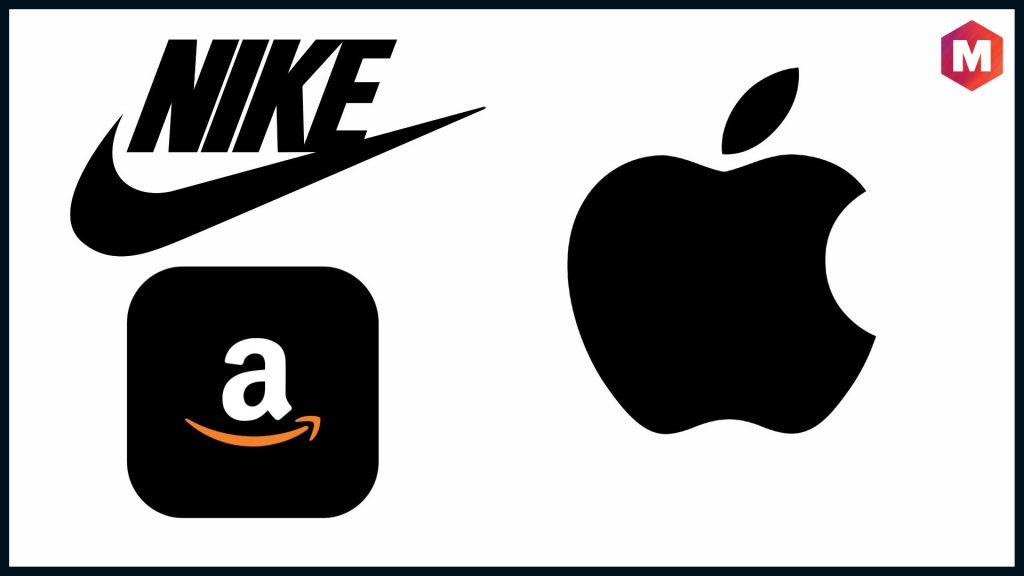Table of Contents
What is Brand Strategy?
Brand strategy is an extensive plan you create to manage and improve your brand, with the purpose of meeting certain brand goals. Your brand strategy should touch every area of your business, be based on consumer desires and emotions, as well as take into account the competition.
A successful brand strategy requires a deep understanding of the brand, the marketplace, and the consumer. Branding is more than just creating a logo or slogan; it’s about shaping how customers perceive your company and developing a relationship with them.
The goal of brand strategy is to create positive perceptions of the brand in the minds of consumers, which will eventually lead to increased sales and profitability. Brand strategy should be an integral part of any business, as it can be used to guide all decision-making.
Definition
A brand strategy is defined as a comprehensive plan that takes your brand goals into account and sets you up for long-term success. Building a brand strategy requires an understanding of brand positioning, target customers, and the brand’s voice. Potential customers must be identified and understood to create effective brand strategies.
The brand’s voice is then created to speak directly to the target audience. Brand strategy should be considered when developing any brand elements, as it represents what the brand stands for. A strong brand identity is essential for any business looking to create a lasting impression. Effective brand strategies create brand equity, which allows businesses to charge more for their products or services. There are many different brand strategy models that businesses can follow, but the most important thing is to find one that works best for the company.
Why is it important to develop a brand strategy framework?
There are many reasons why developing a comprehensive brand strategy is important for any business. A few of the most important reasons include:
- It can help you to better understand your customers and what they want
- It can improve customer loyalty and retention
- It can help you to attract new customers
- It can increase brand awareness and recognition
- It can help you to differentiate your brand from your competitors
- It can increase brand equity and value proposition
A well-defined brand strategy can also help to improve employee morale and motivation, as employees will have a better understanding of the company’s goals and objectives. Branding can also be used as a tool to manage crises.
Developing an effective brand strategy is an important first step in ensuring the success of your business. It should be a continuous process that evolves as your business grows and changes. Brand strategy is not something that can be developed overnight; it takes time, research, and effort.
Elements of a Strong Brand Strategy
1. Purpose
A brand strategy starts with understanding what your company stands for. This is more than just your mission statement; it’s about the underlying purpose or cause that drives everything you do. Why does your company exist? What need does it fill in the marketplace?
2. Consistency
Once you know your purpose, it’s important to be consistent in everything you do. This means using the same colors, fonts, logo, and messaging across all channels. Consistency will help to create a strong and recognizable brand.
3. Emotion
Your brand should evoke certain emotions in your customers. These emotions could be anything from happiness and excitement to trust and loyalty. What feelings do you want your customers to associate with your brand?
4. Flexibility
While it’s important to be consistent, you also need to be flexible. As the world changes, your brand should change with it. This doesn’t mean completely reinventing yourself every few years, but it does mean being open to new ideas and adaptable to the ever-changing landscape.
5. Employee Involvement
Your employees are your brand ambassadors. They should be involved in the branding process from the beginning and should be trained on how to represent the brand consistently. Branding is not something that should be done in a vacuum; it takes a team effort to be successful.
6. Loyalty
Creating loyalty among your customer base is one of the most important goals of brand strategy. Brand loyalty can lead to repeat business, positive word-of-mouth, and increased profits. What can you do to create loyalty among your customers?
7. Competitive Awareness
It’s important to be aware of your competition and what they’re doing in the marketplace. This doesn’t mean that you should copy them, but you do need to be aware of their presence and how they might be affecting your business. Brand strategy can help you to differentiate your brand and make it more appealing to customers.
8. Brand Story
Your brand story is the narrative that surrounds your brand. It includes your history, values, and mission. Your brand story should be authentic and engaging, and it should be something that customers can connect with.
9. Brand Voice
Your brand voice is how you communicate with your customers. It should be consistent across all channels and should reflect your brand’s personality.
10. Brand Design
Your brand design should be visually appealing and reflective of your brand story. It should be used consistently on all channels, from your website to your business cards.
11. Brand Values
Your brand values are the underlying beliefs that guide everything you do. They should be reflected in your branding, and they should be something that you are passionate about.
12. Brand Vibe
Your brand vibe is the overall feeling that you want to create with your brand. It should be positive and inviting, and it should make customers feel good about doing business with you.
Branding Methods
1. Attitude Branding
With attitude branding, you focus on creating a certain feeling or emotion in your customers. This could be anything from excitement and happiness to trust and loyalty. You want customers to associate positive emotions with your brand.
2. Individual Branding
Individual branding is all about creating a unique and recognizable brand for each of your products or services. This helps customers easily identify and remember your brand.
3. Product Branding
Product branding is all about creating a strong and recognizable brand for each of your products. This includes using the same colors, fonts, logo, and messaging across all channels.
4. Co-branding
Co-branding is when two or more brands come together to create a new product or service. This can be a great way to reach a new audience and tap into new markets.
5. Minimalist Branding
Minimalist branding is all about keeping things simple. This includes using clean designs, simple colors, and minimal text. The goal is to create a sleek and modern look that is easy for customers to understand.
6. Brand Extension Branding
Brand extension branding is when you use your existing brand to launch new products or services. This can be a great way to reach new markets and grow your business.
How to develop a great brand strategy?
The key steps involved in brand development strategy are
1. Define Your Brand’s Essence
The first step in developing a brand marketing strategy is to define your brand’s essence. This includes your niche, values, mission, etc. Branding can help you to differentiate your brand and make it more appealing to customers. Some of the elements of brand essence are-
Niche
Your brand’s niche is the group of people that you want to target with your products or services. This could be anything from age and gender to interests and lifestyle.
Purpose
Your brand’s purpose is the reason that it exists. This could be anything from providing quality products to making a difference in the world.
Vision
Your brand’s vision is the long-term goal that you want to achieve. This could be anything from becoming the market leader to changing the way people think about your industry.
Mission
Your brand’s mission is the reason that it exists. This could be anything from providing quality products to making a difference in the world.
Values
Your brand’s values are the underlying beliefs that guide everything you do. They should be reflected in your branding, and they should be something that you are passionate about.
Marketing goals
Your brand’s marketing goals are the specific objectives that you want to achieve with your marketing campaigns. These could be anything from increasing brand awareness to generating more sales.
Conducting brand research
Conducting brand research is a vital part of developing a brand strategy. This includes things like surveys, focus groups, and analytics. Brand research can help you to understand your audience and what they want from your brand.
Brand differentiation
Brand differentiation is the process of making your brand unique and different from your competitors. This could be anything from your branding to your product offerings. Brand differentiation can help you to stand out in the marketplace and attract more customers.
2. Creating Your Brand Messaging
After you have defined your brand’s essence, you need to create your brand messaging. Brand messaging is the way that you communicate your brand to the world. It includes things like your tagline, slogan, and mission statement. Your brand messaging should be clear, concise, and consistent. Some of the elements of brand messaging are
Brand Personality
Your brand personality is the way that you want your brand to be perceived by the world. This includes things like your values, mission, and vision. Your brand personality should be reflected in your branding and messaging.
Brand Voice & Tone
Your brand voice is the way that you communicate with your audience. It should be consistent across all of your marketing channels. Your brand voice should be reflective of your brand personality.
Value Prop
Your value prop is the unique selling proposition that sets you apart from your competitors. It should be reflected in your branding and messaging.
Tagline
Your tagline is a short, concise phrase that sums up your brand. It should be reflective of your brand personality and brand positioning statement.
Messaging Pillars
Your messaging pillars are the key messages that you want to communicate about your brand. They should be reflective of your brand personality and core values.
3. Designing Your Visual Identity
After you have developed your brand strategy and messaging, you need to design a strong visual identity. Your visual identity is the way that you visually communicate your brand to the world. It includes things like your logo, color palette, and typography.
Logo Design
Your logo is the most important part of your visual identity. It is the first thing that people will see, and it should be reflective of your brand. When designing a logo, you should keep it simple, memorable, and relevant.
Color Palette
Your color palette is the second most important part of your visual identity. It should be reflective of your brand personality and messaging. Your color palette should be simple and consistent.
Typography
Your typography is the third most important part of your visual identity. It should be reflective of your brand personality and messaging. Your typography should be simple, clean, and easy to read.
Illustration
Your illustration is the fourth most important part of your visual identity. It should be reflective of your brand personality and messaging. Your illustration should be simple and memorable.
Photography
Your photography or imager is the fifth most important part of your visual identity. It should be reflective of your brand personality and messaging. Your photography should be high quality and consistent.
Brand Guidelines
After you have designed your visual identity, you need to create brand guidelines. Brand guidelines are a set of rules that dictate how your brand should be used. They should be followed by anyone who is creating or using anything related to your brand. Brand guidelines can be either visual or verbal.
4. Implementing Your Brand Strategy
After you have developed your brand strategy, messaging, and visual identity, you need to implement your brand strategy. Brand implementation is the process of putting your brand into action. Brand implementation includes things like creating a website, designing marketing materials, and developing an advertising campaign.
Website Design
Your website is the most important part of your brand implementation. Your website should represent your brand strategy, messaging, and visual identity. It should also be easy to maneuver and full of useful information.
Marketing Materials
They play key roles in both online and offline brand promotion. Your marketing material is an important part of your brand identity and should reflect your strategy, messaging, and visual style. Keep it easy to read for the best results.
Advertising Campaign
Brands use advertising campaigns to promote their products or services. Making it attractive, on-brand, and informative is the key to success.
There are many other aspects of brand implementation, but these are the most important. Brand implementation is a continuous process that should be revisited regularly.
5. Measuring Your Brand Success
After you have implemented your brand strategy, you need to measure your brand success. Brand success is measured by things like brand awareness, customer loyalty, and sales.
Brand Awareness
Brand awareness is the level of recognition that people have of your brand. Brand awareness can be measured by things like surveys and web traffic.
Customer Loyalty
Customer loyalty is the level of customer satisfaction and repeats business that you have. Customer loyalty can be measured by things like customer surveys and retention rates.
Sales
Sales are the most important metric for measuring brand success. Sales can be measured by things like revenue and market share.
Examples of Winning Brand Strategy
Nike
Nike is one of the most successful brands in the world. Their branding strategy is built around the idea of “Just Do It”. Nike’s brand messaging is all about motivation and inspiration. Their visual identity is clean and modern.
Nike has implemented their brand strategy through things like its website, marketing materials, and advertising campaigns. Nike has been very successful in measuring its brand success. They have a high level of brand awareness and customer loyalty. Nike also has very high sales numbers.
Apple
Apple is another extremely successful brand. According to Tor Myhren, VP of Marketing Communications at Apple, the company’s branding strategy is based on simplicity, creativity, and humanity – their three lenses. If a product does not have these qualities, it is not an Apple product. Apple’s visual identity is clean, modern, and minimalistic. The key to the Apple brand’s success is its performance and design.
Apple’s products are almost always more expensive than its competitors. For example, you’ll find that an iPhone costs significantly more than a Samsung smartphone. By setting high prices and premium branding combined with creative innovation, Apple remains highly competitive in the market.
Amazon
Amazon is a very successful brand that has built its reputation on convenience, low prices, and a huge selection. Amazon’s branding strategy is built around the idea of being the “everything store”. Its logo, the Amazon arrow, symbolizes this. The arrow also points from A to Z, representing the wide range of products that Amazon offers.
Amazon’s success story is one that many businesses look to emulate because it seems impossible to achieve. Amazon has become a powerhouse by doing what many other companies don’t or won’t do: they listen to their customers and then take action on those needs.
This forward-thinking strategy has led Amazon to require that all of its managers receive mandatory call center training for two days every year. By ensuring that its employees are always putting the customer first, Amazon guarantees its continued success.
Conclusion!
Brand strategy is extremely important for businesses of all sizes. By understanding your brand and what makes it special, you can create a strong foundation for success.
Your brand strategy should be flexible and adaptable so that it can grow with your business. Keep these things in mind as you develop your brand strategy and you’ll be on your way to success.
Liked this post? Check out the complete series on Branding



Making the right strategy for defining one brand is the best